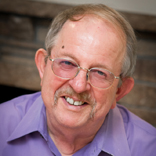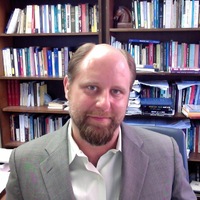 Eric Steinhart is Professor of Philosophy at William Paterson University. We invited him to answer the question “What does philosophy of religion offer to the modern university?” as part of our “Philosophers of Religion on Philosophy of Religion” series.
Eric Steinhart is Professor of Philosophy at William Paterson University. We invited him to answer the question “What does philosophy of religion offer to the modern university?” as part of our “Philosophers of Religion on Philosophy of Religion” series.
Some modern universities are sectarian. They are committed to specific religious traditions. To teach at such a university, a professor may have to sign a statement affirming his or her faith in some specific creed. Sectarian universities have their own uses for their philosophies of their religions. At a Christian university, the philosophy of religion is probably going to be some version of Christian apologetics. There’s nothing wrong with that. But not all modern universities are sectarian.
Some are secular. They are public universities, which, at least in the United States, are legally obligated to adhere to the Establishment Clause in the First Amendment to the Constitution. If philosophy of religion is Christian apologetics, then it really should not be taught in public universities in the US. It might even be illegal. And indeed most contemporary philosophy of religion textbooks are texts in Christian apologetics. Outside of the US, of course, laws are different. Nevertheless, in any secular university, the students likely come from diverse religious backgrounds. So a philosophy of religion course can’t be relevant if it’s just apologetics for one religion. Apologetics for any religion has no business in the modern secular university. And if philosophy is the pursuit of truth, rather than the handmaiden of theology, then again apologetics has no place in the modern secular university. Fortunately, apologetics, Christian or otherwise, is not the only way to do philosophy of religion. But it should be obvious that a course which just offers some general information about world religions isn’t a philosophy of religion course. The philosophy of religion isn’t religious studies.
Philosophers can nevertheless ask many important questions about religion generally. There are definitional questions: what is religion? And many sociological and psychological questions about religion are relevant in philosophy. But philosophy of religion, as a secular discipline, can ask important questions about religious truth and value. At least in the West, or in the Abrahamic religions, religious truth claims seem very different from other kinds of truth claims. Religious truth claims seem heavily isolated from evidence and immune to revision. Here’s a philosophical problem involving truth and value: do the conceptions of value and truth found in the Abrahamic religions lead to religious violence? How are religious beliefs and values involved in practical syllogisms whose conclusions are violent actions?
There is no doubt that religions have contributed to the goodness of the world. But today, sadly, they often seem mainly to be sources of conflict. So one task for philosophy of religion is conflict reduction. Secular philosophers of religion can try to work out ways to reduce the conflicts between different religions, or the conflicts between religions and science, and so on. Many philosophers have done this. They’ve argued that all religions point to the same ultimate truth or ultimate reality. Or that science and religion don’t really compete. A globally ecumenical approach to religion can be valuable in secular universities. Students from diverse religious backgrounds need to learn how to work together, both in college and in their business or political lives after college. Such an approach is philosophical, because it deals in intensely abstract concepts.
Another strategy for secular philosophy of religion is somewhat historical. It’s not a history of religion course, but a course which shows how religions evolve, how they are born, live, decline, and die. Religions form a phylogenetic network. For example, in the West, there were pre-Christian religions that contributed ideas to Christianity. And new post-Christian religions are currently emerging. This kind of course shows students that their own religious ideas are not immutable truths. It can help to open their minds to religious diversity and tolerance. It can help reduce conflict. But it isn’t oppositional: it doesn’t oppose modern atheism to Christianity, but shows, for instance, how modern atheism grows out of Protestant theology. This sort of evolutionary approach to the secular philosophy of religion isn’t merely a historical survey. It reveals the dynamics of concepts, arguments, and patterns of religious practice.
A third strategy for secular philosophy of religion is to try to explore the future of religion. There are three large classes of possible futures here. One class of possible futures, which philosophers have explored, contains the futures without any religions at all. Those are essentially secular futures. Of course, they don’t need to be secular humanisms. A second class of possible futures contains those in which the old axial age religions have mostly been replaced with new religions. Philosophers of religion can work on the development of religions that aren’t bound to tribal identities. We can work on the development of universal religions. The task of constructing your own religion is an interesting class exercise. A third class of possible futures involves the evolution of religion into something different. Today there is evidence that religion in the West is evolving into spirituality. But spirituality is currently extremely vague. Philosophers of religion may work to clarify it. And perhaps spiritualities can be developed in ways that are acceptable by all human animals. If so, then philosophy of religion in the modern secular university might become philosophy of spirituality.



